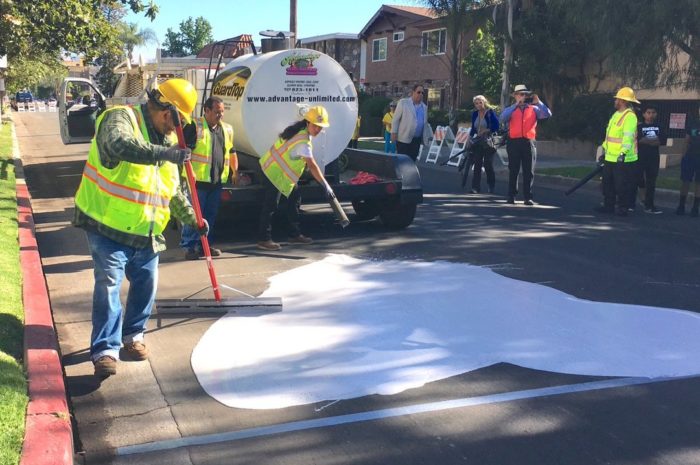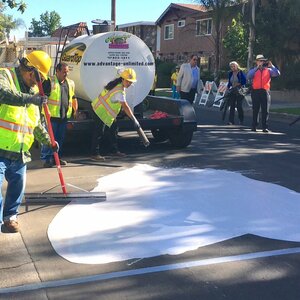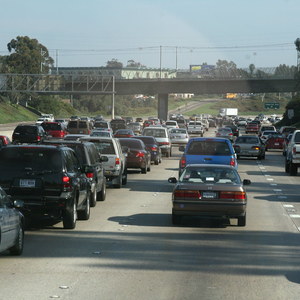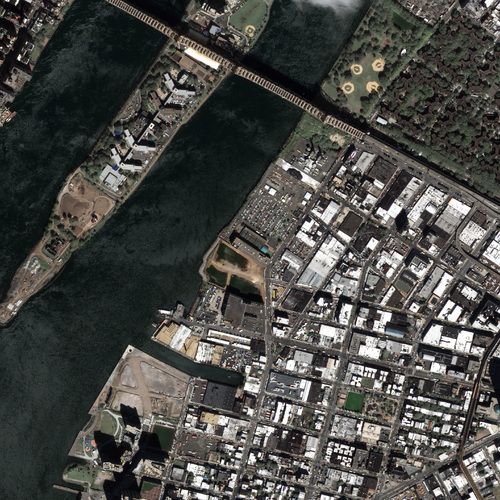
Image Credit: Los Angeles Bureau of Street Services via Twitter
In an experimental program launched earlier this year, the City of Los Angeles has been applying a reflective coating to some of its streets in an attempt to lower asphalt temperatures and keep the city cooler.
City street crews first applied a product called CoolSeal in May, and were to duplicate the experiment in other parts of the city later in the summer. Officials hope that the coating will help offset higher average temperatures caused by climate change and the heat-island effect.
“The city’s going to get hotter because of climate change, particularly this neighborhood of the west San Fernando Valley,” Greg Spotts, assistant director of the Bureau of Street Services, told The Los Angeles Daily News. “The phenomenon called the heat island effect means the city is hotter than the surrounding countryside. We’re exploring ways to reduce the heat island effect by reducing the absorption of heat in the built environment.”
In a Tweet, the city’s Bureau of Street Services said that surface temperatures were 10°F cooler on the coated pavement than on an adjacent area that was uncoated. According to the manufacturer, a parking lot that once averaged 160°F during the summer saw surface temperatures drop to between 135°F and 140°F after an application of CoolSeal.
The coating costs $40,000 a mile and lasts for seven years. The city hopes that the experiment will encourage manufacturers to develop other cool-pavement technologies that can be incorporated into a multi-million-dollar street repair program, The Daily News said.
The cool-pavement program comes at a time of rising temperatures in the region. Average temperatures have risen 5°F in the last 100 years due to the urban heat island effect; during the summer, average temperatures have climbed by 10°F. Extreme heat days, with temperatures near 100°F, have increased from two per year in 1906 to 24, with the duration of heat waves increasing from a few days to two weeks.
The Los Angeles Times said in article earlier this year that Mayor Eric Garcetti has pledged to reduce the average temperature in the city by 3°F over the next 20 years.
Weekly Newsletter
Get building science and energy efficiency advice, plus special offers, in your inbox.















0 Comments
Log in or create an account to post a comment.
Sign up Log in